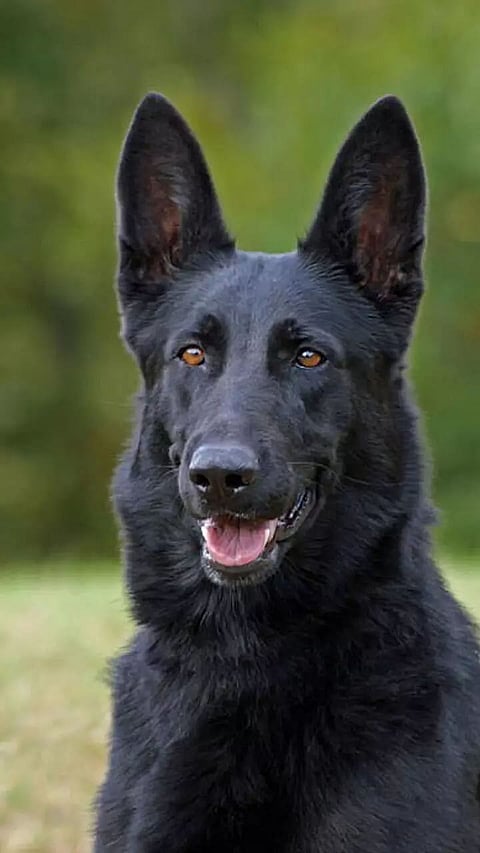10 Strongest Dog Breeds for Getting Work Done
Rottweiler
Like many dog breeds, Rottweilers were initially bred to herd large animals, pull carts, and serve as security dogs. To do their jobs, they had to be extremely big and strong. Today's Rottweilers still tend to nudge objects, other animals, and people. They can be great family dogs, but Rottweilers don't pair well with the elderly or families with small kids; their prodding can topple people who are prone to falling.
Great Dane
Great Danes are massive and have sweet, calm personalities; they are the "gentle giants" of the dog world. Great Danes were originally bred to be powerful boar hunting dogs that could hold their prey until the hunter caught up. Over time, they became watchdogs and family companions. As they became popular family dogs, breeders selectively bred out their tough, hunting personalities to make them the gentle, sweet dogs we know today.
Siberian Husky
Stories about huskies are well known; they have incredible strength that allows them to pull heavy sleds across challenging, snowy terrain. But how did these sled dogs get so strong? About 3,000 years ago, the nomadic Chukchi tribe in Siberia first bred the Chukchi dog to pull their heavy hunting sleds across long distances. In addition to brute strength, the Chukchi dog possessed an extremely warm winter coat and astounding metabolism. These dogs could constantly exercise with minimal food. The Siberian husky is a direct descendant of the Chukchi dog and still has incredible strength, speed, and endurance.
German Shephard
German shepherds have been employed as working dogs for hundreds of years for their strength and endurance. They originated in Germany as hunting and herding dogs. Due to their extreme athleticism and intelligence, today's German shepherds often serve as guide dogs for the blind or service dogs, search dogs, and military and police dogs. Their sweet, loving personalities make them excellent family dogs, too.
Bulldog
Don't let their shorter stature fool you. Bulldogs are extremely strong, powerful dogs due to their history as fighting dogs. In 13th century England, bulldogs were used in a horrific sport known as bull-baiting. During these matches, they would fight much larger, more powerful bulls. These fighting bulldogs had aggressive, fierce personalities—a far cry from today's sweet, calm bulldogs. When bull-baiting was banned, bulldog breeders softened their tough personalities, producing the gentle, loving companion dogs that we know today.
Saint Bernard
When you think of an image of a Saint Bernard, you probably imagine a big, hairy dog with a wooden cask of brandy strapped around its neck on a snow-topped mountain. This imagery accurately depicts how these dogs worked to rescue lost travelers in the snowy Swiss Alps. The breed originated over 1,000 years ago. It had a keen sense of smell and brute strength that has saved thousands of people from snowy terrain. Today, Saint Bernards are typically companion dogs and make excellent service dogs due to their loyalty, affection, and fierce protection of their people.
Alaskan Malamute
The Alaskan Malamute looks a lot like the much smaller Siberian husky; however, the indigenous people bred the two closely-related Arctic dogs for different needs. The sleeker Husky was bred more for its speed and endurance needed to pull sleds over long distances, while the Alaskan Malamute was developed for its sheer strength. Malamutes were sometimes used to pull sleds, and they also hunted polar bears, seals, and other powerful prey. It's commonly believed that Alaskan Malamutes are wolf-dog hybrids, but today's Malamutes are fully domesticated and make sweet, loving, and loyal companions.
Doberman Pinscher
Doberman pinschers, otherwise known as Dobies, first originated in Germany in the early 1900s. Karl Friedrich Louis Dobermann developed the breed and aimed to produce a medium-sized companion dog that could also work as a fierce guard dog. The Doberman is a muscular, athletic dog with high endurance and a good personality. The U.S. Marine Corps selected the Doberman as its official dog during World War II for its athleticism and endurance. They are still used as security, military, and police dogs today.
Rhodesian Ridgeback
Known for the distinctive "ridge" along their backs, Rhodesian ridgebacks originated more than 500 years ago when European immigrants brought domesticated dog breeds to South Africa and bred them with a native, ridgebacked dog. This new crossbreed, the Rhodesian ridgeback, was trained to hunt large game, like lion and boar, in packs of four to six. Modern Rhodesians have retained their ancestors' strength and endurance and are now companion dogs to very active, athletic families or guard dogs.
Chow Chow
Despite their fluffy, teddy bear appearance, Chow Chows are compact, mighty dogs with a long history as aggressive guard dogs. Their DNA dates back to 206 B.C.E. when they were temple guard dogs in China and other parts of Asia. It's mistakenly believed that modern-day Chow Chows have all retained their ancestors' aggressive behaviors; most are gentle, loving family dogs. They are sturdy and strong-willed but are fiercely loyal, and most still enjoy a game of chase.

